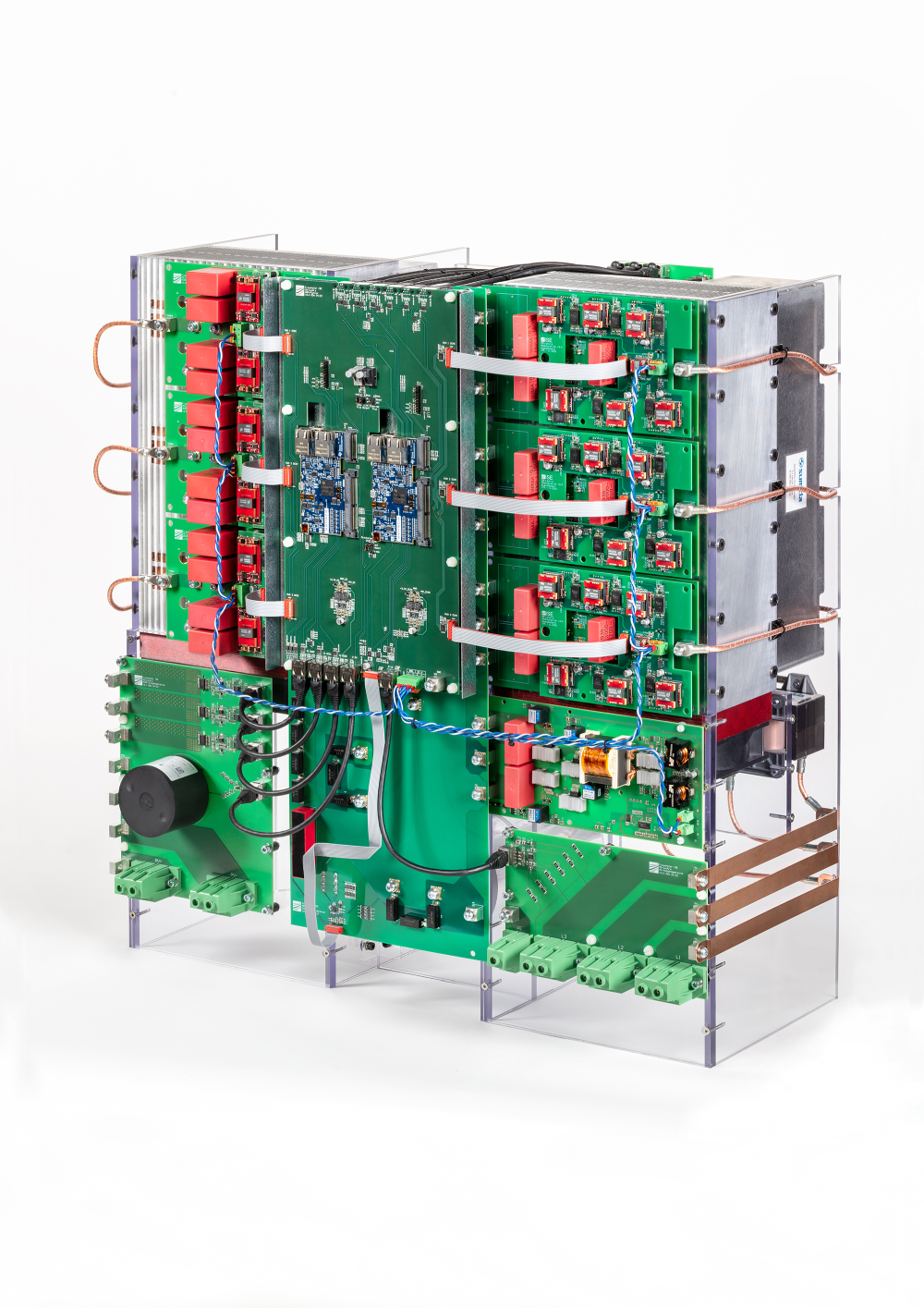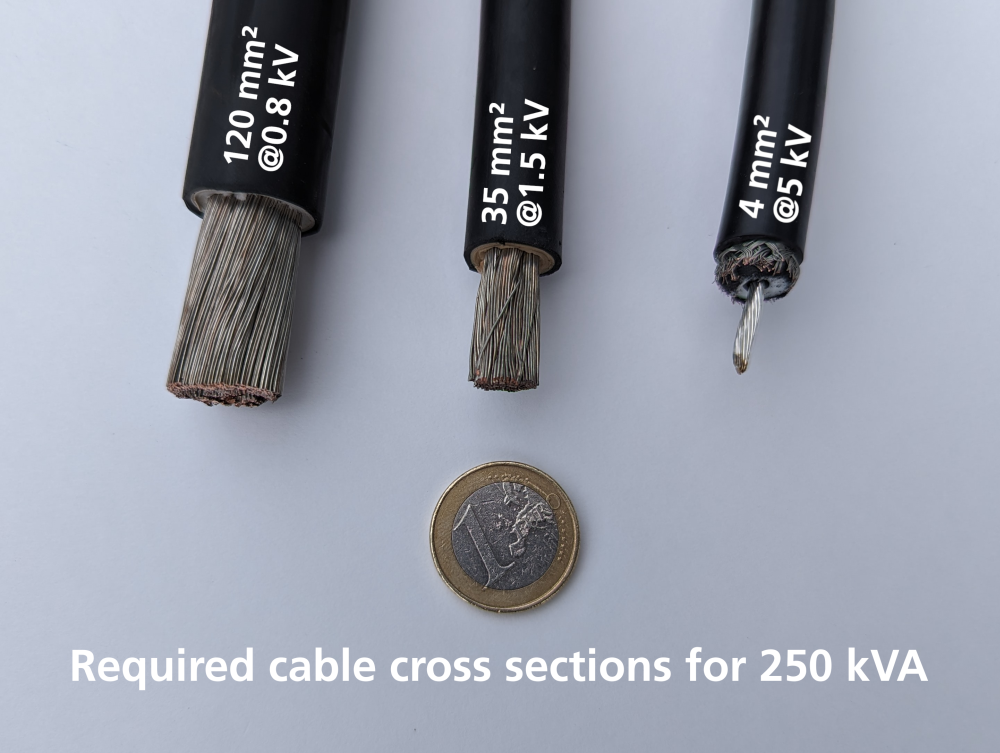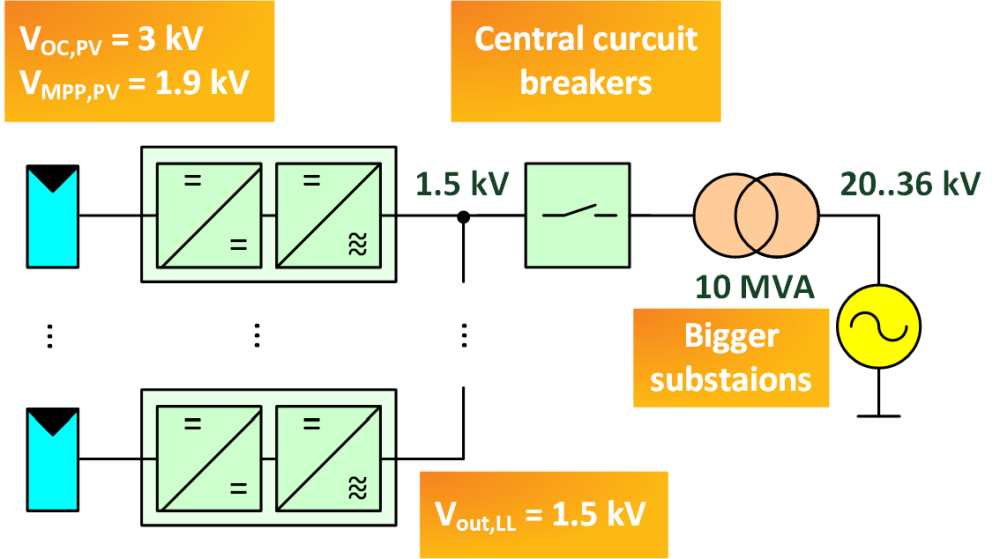| Duration: | 04/2020 - 09/2023 |
| Contracting Authority/ Sponsors: | Federal Ministry of Economic Affairs and Climate Action (BMWK) |
| Project Partners: | Siemens AG, SUMIDA Components & Modules GmbH |
| Project Focus: |
MS-LeiKra – Powerelectronics for the Next Generation of Medium Voltage PV Power Plants



The planned expansion of photovoltaics requires large quantities of raw materials, including copper and aluminum for cables and transformers. In the »MS-LeiKra« project, a research team at Fraunhofer ISE has developed a string inverter with a significantly higher output voltage. This can save large amounts of resources, because the higher voltage results in a smaller current and thus smaller cable cross-sections. In addition, a new system concept for the next generation of large-scale PV power plants was developed as part of this project.
Today's string inverters use output voltages (line-to-line) between 400 VAC and 800 VAC. This voltage has been increased in the past as string inverter power ratings have increased. The higher voltage decreases the current for the same power and thus decreases the current-dependent losses. In recent years, however, there has been no further increase in voltage despite further increases in power. There are two reasons for this: 1. the challenge of building a highly efficient and compact inverter for higher voltages based on silicon semiconductors; 2. the PV-specific standards that exist today apply only to the low-voltage range. This ends at 1.500 VDC or 1.000 VAC.
The savings potential that could be achieved by further increasing the voltage is shown in the figure below left. This is based on the assumption of a string inverter with an output power of 250 kVA. With an output voltage of 800 VAC possible today, a minimum cable cross-section of 120 mm² is required according to DIN VDE 0298-4, Table 9.2. If the voltage is increased to 1.500 VAC, the cable cross-section drops to 35 mm². If the voltage is increased to 5.000 VAC, only 4 mm² of the required copper cross-section remains. Since cable lengths in the double-digit kilometer range are installed in a large-scale PV power plant, enormous amounts of material can therefore be saved.
To overcome the barriers mentioned above, researchers at Fraunhofer ISE have developed the world's first medium-voltage string inverter and successfully commissioned it connected to the grid. The inverter has an output voltage of 1.500 VAC with a power of 250 kVA. It has a two-stage design. The boost converter, with a PV input voltage of 1.7 kV to 2.4 kV, is based on 3.3 kV silicon carbide (SiC) semiconductors. The inverter part was built with hybrid ANPC modules. Four silicon and two SiC semiconductors are used here. This topology allows the major advantages of SiC to be exploited at only minimally higher cost. The demonstrator showed that higher voltages are technically feasible and that work must now be done to adapt the standards.